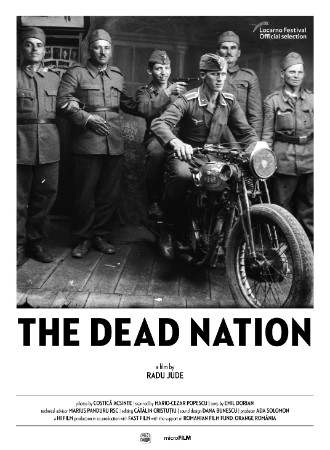
The Dead Nation 2017
Distributed by Grasshopper Film, 12 East 32nd St., 4th Floor, New York, NY 10016
Produced by Ada Solomon and Ilinca Belciu
Directed by Radu Jude
DVD , b&w, 83 min.
College - General Adult
World War II, Romania, Holocaust, Jews, Photography
Date Entered: 10/26/2018
Reviewed by Susan J. Martin, Head, Acquisitions Services University of ChicagoRadu Jude’s documentary, The Dead Nation provides an overview of the rise of anti-semitism in Romania during the years leading up to and including World War II. Those familiar with Kenneth Branaugh’s 1987 mini-series, Fortunes of War, will recognize many of the historical and political events that are covered in Jude’s film.
The film’s visual structure is simple, consisting entirely of still photographs taken by Romanian photographer, Costica Acsinte, depicting rural life in Romania between 1937 and 1946. Working as a photographer since 1930, Acsinte owned his own photography studio, “Foto Splendid Acsinte” located in the town of Slobozia. During this time frame, he worked primarily with glass plates. Since 2013, there has been an ongoing project to digitize his archive and save these negatives and images from decay; many of Acsinte’s photographs are in the public domain and can be viewed online at the Costica Acsinte Archive.
The decision to use Acsinte’s photographs as the film’s visual base was inventive and clever. However, the pacing of the photographs is agonizing. Each image lingers on the screen for a longer period of time than is necessary, and often is accompanied with long breaks in the narration. The result is a film that is paced too slowly and, at times, loses the interest of the viewer. This slow pacing would be difficult viewing for even the most dedicated scholars.
An additional and substantial problem is the poor visual quality of the subtitles. The film is narrated in Romanian and subtitled in English. However, the subtitles are in a white typeface and often are difficult to impossible to read. They get lost against the predominantly white photographs. A solution would have been to put the white subtitles in a black box or either use black for the subtitle typeface color. Those viewers relying entirely on the subtitles to understand the narrative will miss information and continuity.
For the content narration of the film, Radu Jude primarily uses excerpts from Emil Dorian’s diary (Quality of Witness: A Romanian Diary, 1937-1944. Jewish Publication Society of America, 1982). Dorian was a Romanian physician and poet. He was also Jewish, and his diary captures not only his own persecution, but the persecution of the Romanian Jews. The narrative is clear and vivid, and Dorian’s witness descriptions of Romania’s Holocaust provide a stark and startling contrast to the bucolic rural photographs.
The Dead Nation is recommended with reservations due to the issues reading the English subtitles, as well as the price, $375 for the DVD from Grasshopper Film, with higher costs for a digital site license or a site license and DVD combination.